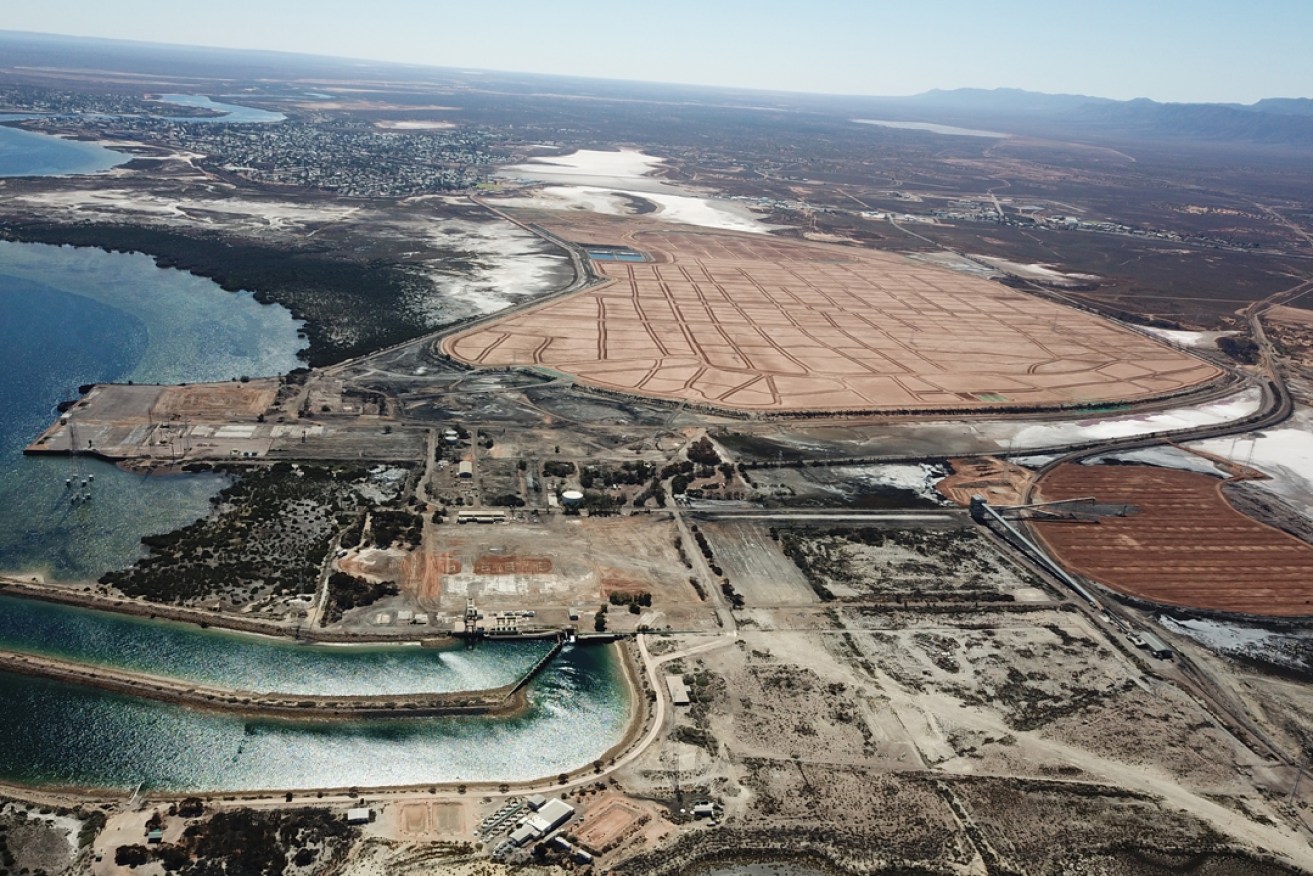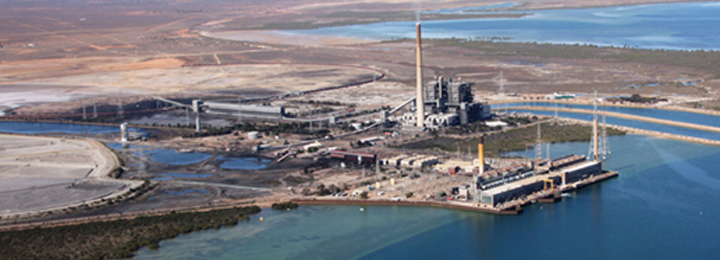Final curtain falls on SA’s coal-fired era
South Australia’s coal-fired electricity industry is in its final chapter, with the sale of the 65-year-old Port Augusta power station site expected to reach settlement by the end of the month.


Rehabilitated site of the former Port Augusta power stations. Photo: Flinders Power.
Flinders Power has been managing the rehabilitation of the site since its closure in 2016, and reached an agreement in February to sell the coastal land to CU-River Mining.
The 1068ha site – about the size of the Adelaide CBD – is 5km south of Port Augusta.
CU-River Mining is proposing a $250 million port facility on the site.
Flinders Power contracted McMahon Services Australia to carry out the decommissioning and demolition work, which achieved ‘practical completion’ last week.
Site contamination work to remediate soil and groundwater has also been recently completed.
This has coincided with welcome rains in the past 10 days that are expected to spark further growth of a 320ha native revegetation project on top of the site’s ash dam.
“It’s a significant milestone for us – we’ve been working on the project for four years so it’s great to have completed the work,” Flinders Power program director Brad Williams said.
The 90MW Playford A power station was commissioned by the Electricity Trust of South Australia in 1954 and the adjacent 240MW Playford B plant was constructed in 1963.
The 520MW Northern power station was established alongside Playford B in 1985.
All three were fuelled by coal mined at Leigh Creek in and transported 260km along a dedicated rail line south to Port Augusta.
Alinta Energy mothballed Playford B in 2012 and the last electricity was produced at the Northern Power Station in May 2016.
The power stations’ ash dam reached a size of 273 ha and a depth of 5 – 8m by the time the plants closed in 2016.

The site in 2008. Photo: Flinders Power.
Hail and strong winds ripped the suppressant coating off the dried-out ash pile in January 2017, resulting in a dust cloud that impacted areas of the town.
Williams said apart from the ash dust issue in early 2017 brought about by a severe storm event, the whole process had gone “exceptionally well”.
“Demolishing three coal-fired power stations of this scale, rehabilitating the site and particularly the scale of the ash storage area is really unprecedented,” he said.
“You learn as you go and I think the whole project has been exceptionally delivered by the entire team.
“It’s all on time, on budget and delivered safely. We had eight big charge felling events where the boilers and three stacks were felled and there were no concerns there.”
In February it was announced that South Australian iron ore magnetite producer CU-River would purchase the entire site and develop it into a multi-user bulk commodity transhipment port.
CU-River’s proposed port facility will be capable of handling iron ore, grain and other commodities. Barges will be loaded at the port then sail into Spencer Gulf’s deeper water to unload onto larger vessels.
It’s expected that the facility will have an initial capacity of up to 15 million tonnes per annum with the potential to expand to more than 50 million tonnes.
“The purchase of the site is a significant, strategic decision that enables CU-River to secure a direct export pathway for the 15 million tonnes of high-grade iron ore magnetite it plans to mine each year from 2026,” CU-River’s External Affairs Manager Shelaye Boothey said in February.
“However, it is our intention to develop the port as a multi-user facility, providing Spencer Gulf and far-north industry with further export opportunities.”
CU-River, a South Australian company, owns the Cairn Hill mine and several highly prospective mining projects south of Coober Pedy.
The Cairn Hill mine, located on the Woomera Prohibited Area (WPA), has exported more than one million tonnes of ore to the Chinese steel industry since 2014.
CU-River will resume production at the mine later this year with an anticipated five-year mine life.
The Company plans to expand the Cairn Hill mine and establish two further significant mines by 2026.
These mines are expected to operate for up to 30 years, produce 15 million tonnes per annum of premium grade iron ore for the Chinese steel industry.
CU-River has flagged other potential commercial developments for the Port Augusta site, including a large-scale solar farm.
Williams said Flinders Power was working through settlement with CU-River, which included satisfying the State Government it had fulfilled its remediation obligations.
“We’re working towards a late May settlement,” he said.
“The EPA licence will be transferred after settlement and then CU-River will oversee the ongoing management obligations for the site.”
As part of the closure process, South Australia’s Environment Protection Authority required Flinders Power to develop and implement a closure and post-closure plan, a dust management plan, a rehabilitation plan for the ash dam and put in place additional dust control measures when needed.
These extra measures were implemented during the particularly dry spring of 2018 and included the use of dust suppressants and soil ‘roughing’ to stop dust being raised.
In an emailed statement, the EPA said Flinders Power had complied with its is licence conditions, including ensuring sufficient dust management controls were in place.
The statement said air-quality monitoring had shown Port Augusta had not exceeded the national standards for the finest particles air-quality monitoring since the area was covered with topsoil in 2017.
“There have also been no community dust complaints attributed to the site since extra measures were put in place to suppress dust in October 2018.”
Part of the ongoing management that will become CU-River Mining’s responsibility after settlement is the 320ha revegetation project on the former ash dam.
The area is made up of the 20ha former coal stockpile area, the 30ha borrow pit where 700,000 cubic metres of dirt was taken for the project and the 273ha ash pit, which had been kept wet with sea water for more than 60 years of power station operation.
Flinders Power contracted SA-based Succession Ecology to drive the massive revegetation effort.
The dirt from the borrow pit was spread over the area in early 2017 before six tonnes of native seeds – 4.5 tonnes of saltbush seeds and 1.5 tonnes of native grasses – were sown in June 2017 and April 2018.
Only about half of Port Augusta’s long-term average rainfall has fallen in the past 24 months and were compounded by a scorching summer where daytime temperatures approached 50C.
But 38mm in the past 10 days has buoyed hopes that more plants will germinate in the coming weeks and become established, particularly if moderate follow up rains are received.
Succession Ecology director Glenn Christie said the saltbush had outperformed the native grasses with some shrubs almost a metre wide.
He said this month’s rains were the most significant since 25mm last June and would likely spark and explosion of germination and growth.
“Because this rain event has happened about six weeks earlier than last year, the soil is warmer and they are the kind of conditions you want,” Christie said.
“But it’s all going to depend on follow up rain – if we even get a moderate winter we’ll be away.
“Last June (2018) we got a good start but then we got a very cold and dry winter and then an exceptionally hot and dry spring, summer and early autumn.
“What we’ve got is little oases all over the place. We can see the potential but it is the rain gods that will make this happen.
Christie said a revegetation project of this size in an arid zone was a massive challenge and possibly the first of its kind anywhere in the world.
“A lot of people think of plantings and they think of trees and shrubs but that part of Port Augusta was never trees or shrubs,” he said.
“That whole power station was built on salt marsh and that’s what we are trying to re-establish.
“Think of bonsai forest where you have your ground covers, shrubs and trees and nothing is taller than a metre and a half.”
Want to comment?
Send us an email, making it clear which story you’re commenting on and including your full name (required for publication) and phone number (only for verification purposes). Please put “Reader views” in the subject.
We’ll publish the best comments in a regular “Reader Views” post. Your comments can be brief, or we can accept up to 350 words, or thereabouts.
InDaily has changed the way we receive comments. Go here for an explanation.




